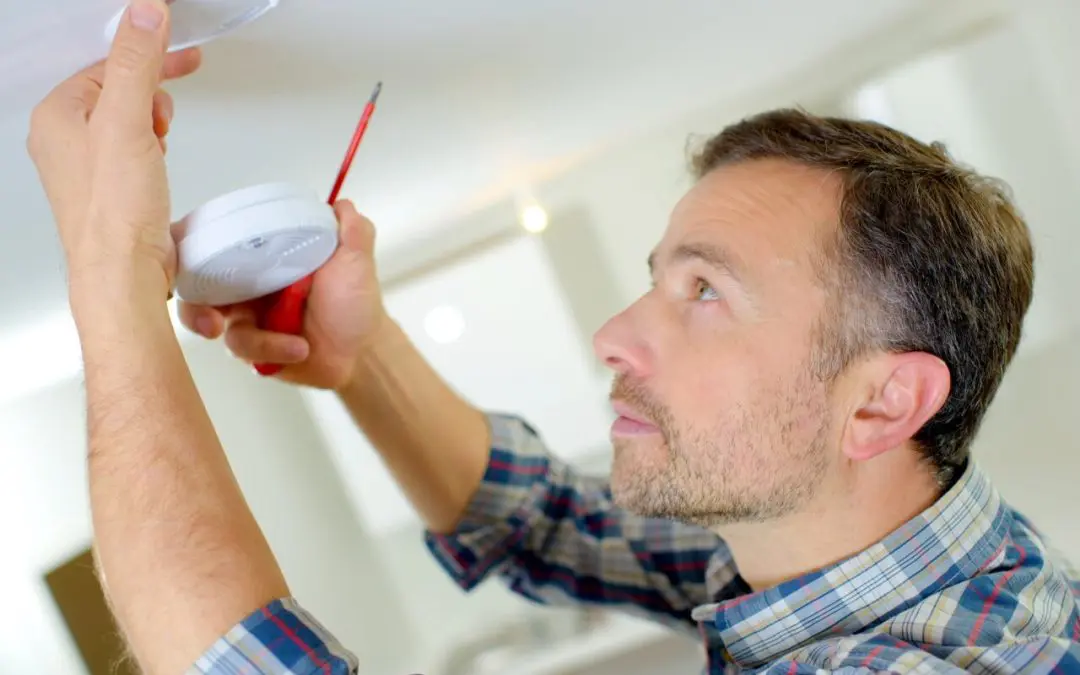You want to ensure your family and property are protected from the dangers of smoke and house fires. One of the most effective ways to do this is by installing smoke detectors in strategic areas around your home. Here are six tips for smoke detector placement and helpful tips on how to test and maintain them.
Placement of Smoke Detectors in the Home
1. Kitchen Smoke Detector
Cooking is the leading cause of house fires, so it’s essential to have a smoke detector in your kitchen. Unfortunately, the kitchen detector is the most frequently disabled one due to false alarms. To prevent the detector from accidentally sounding, install the device ten to 12 feet away from cooking appliances. This placement will help prevent the activation of the alarm due to food prep, but it’s still close enough to detect an actual fire.
2. Smoke Detector Placement in the Bedrooms
Install smoke detectors in every bedroom to alert people of a fire while they are asleep. Devices in each bedroom will ensure family members will be alerted if a fire starts in their room.
3. The Living Room
The living room and other common areas in your home – including the den and dining room – should have a smoke detector. Family spending time in these areas will be warned of smoke or fire danger.
4. The Basement
Basements can be a fire hazard due to various appliances and their location in the home. It is recommended to install a smoke detector on the ceiling at the bottom of the stairs. This placement is important as it’s more likely to detect smoke from a basement source before it spreads.
5. Hallway Placement
Because hallways connect areas of the home, smoke alarms are essential. Install smoke detectors on the ceiling in the hallway. This device will alert family members in their bedrooms of a fire elsewhere in the home.
Tips for Maintaining Smoke Detectors
When installing detectors, place them on the ceiling or high up on a wall, between 4 and 12 inches away from the ceiling. Install each device on the ceiling, away from ceiling fans, vents, windows, or doors. This placement ensures it will detect smoke from anywhere in the room.
Test your smoke detectors monthly by pressing the button on the device; you should hear the alarm sound. Replace the batteries annually and purchase new smoke detectors every ten years. Keep your detectors clean, and when tackling home improvements, never paint over the devices.
Protecting your loved ones and your property from the dangers of house fires is easier with smoke detectors in strategic locations around your home. Maintain the devices and test them twice a year. You’ll enjoy peace of mind knowing your family is well-protected against the risk of fire in your home.
Smoke Detector Placement FAQs: 7 Questions Answered
1. What if I have an open-concept kitchen/living room layout?
In open-concept spaces, one centrally located smoke detector might not be enough. Consider installing additional detectors near the cooking area and living room furniture, ensuring adequate coverage for both zones.
2. Should I place a smoke detector near my fireplace?
Avoid placing detectors directly above or too close to your fireplace. Instead, install them at least 10-15 feet away, on a wall or ceiling, to prevent false alarms from smoke and dust.
3. Do I need smoke detectors in bathrooms?
While not required by most building codes, placing a smoke detector outside the bathroom door, in the hallway, can provide early warning of a fire originating within. Remember, avoid installing detectors directly inside bathrooms due to humidity.
4. Are there different types of smoke detectors?
Yes, there are two main types: photoelectric and ionization. Photoelectric detectors are better at detecting smoldering fires, while ionization detectors are more responsive to flaming fires. Consider installing a combination of both for comprehensive protection.
5. What about carbon monoxide detectors?
Smoke detectors and carbon monoxide detectors serve different purposes. While smoke detectors alert you to fire, carbon monoxide detectors warn you of the presence of the odorless and deadly gas. Install carbon monoxide detectors on each floor of your home, outside bedrooms, and near potential sources like furnaces and garages.
6. How can I prevent false alarms?
Besides proper placement, keeping detectors clean and away from dust, air vents, and cooking areas can minimize false alarms. Additionally, replacing batteries regularly and avoiding testing with open flames will ensure optimal performance.
7. What should I do if my smoke detector beeps intermittently?
Intermittent beeping usually indicates low battery. Replace the batteries immediately. If the beeping persists, even after replacing the batteries, contact a qualified electrician to check the device.
GreenTech Home Inspections offers inspection services in the Las Vegas area. If you’re buying or selling a home, contact us to schedule an appointment.

